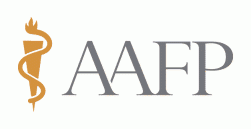Poverty and Health - The Family Medicine Perspective (Position Paper)
September 2015

Executive Summary
The vision of the American Academy of Family Physicians (AAFP) is to transform health care to achieve optimal health for everyone. In today’s era of population health management, the AAFP’s vision is especially relevant, focused, and clear. Implementing mechanisms to measure and improve the health of diverse populations is a goal that is not just “the right thing to do.” It is essential for improving the health status of all patients and is becoming standard work as the nation moves toward pay-for-value reimbursement. Success in this new era means achieving better outcomes by transforming health care to overcome obstacles to population health improvement, such as poverty.
As family physicians, we have a unique perspective on the health challenges of local populations because we serve generations of families and follow individual patients through different life stages. We are privileged to share the complex stories of individuals and families in both sickness and health over long periods of time and across different care settings. Rather than viewing a single snapshot of a patient during an episode of illness, we know the patient’s whole story. We know about the environmental and patient-/family-specific factors that led to the illness and what the patient needs in order to manage the illness effectively. As lifelong collaborators in care, family physicians are well positioned to understand each patient’s individual obstacles to health and help overcome them.
Poverty is one obstacle that can affect our patients’ health. It is an insidious, self-perpetuating problem that affects generations of families. Beginning in utero and continuing throughout an individual’s life, poverty affects health via complex mechanisms. Life expectancy, learning abilities, health behaviors, and risks for developing disease are affected by poverty, as are educational, work, and lifestyle opportunities. The degree to which an individual’s health outcome is affected is filtered by his or her level of “host resistance” to poverty. Poverty does not automatically determine an individual’s health status, although it can significantly influence it. This distinction opens a door of opportunity at both the individual and population levels. Society can intervene to increase host resistance and mitigate poverty’s negative effects on individual and population health by expanding access to health care, providing infrastructure that supports healthy habits, and promoting strategies to reduce poverty.
At the practice level, family physicians are well positioned to mitigate the effects of poverty on health by understanding each patient’s unique challenges and coping strategies, and knowing what community resources are available. We do not need to act in isolation. In the era of population health management, diverse private and public resources are recognizing each other and aligning to improve health outcomes. Health and social service resources can connect patients and physicians directly to solutions that mitigate poverty’s effect on health.
Caring for a patient of limited material means requires sensitivity to and understanding of the patient’s specific challenging circumstances in order to design a treatment plan that is achievable and sustainable. Such an approach requires a culturally proficient medical home and a well resourced medical neighborhood that supplies readily accessible solutions. When these solutions are incorporated seamlessly into everyday practice workflows, family physicians and care teams can be true to the AAFP’s vision by achieving positive change for individuals, families, and communities and improving population health.
Full Resource/Source: AAFP
Secondary menu
Copyright © 2024 Primary Care Collaborative



